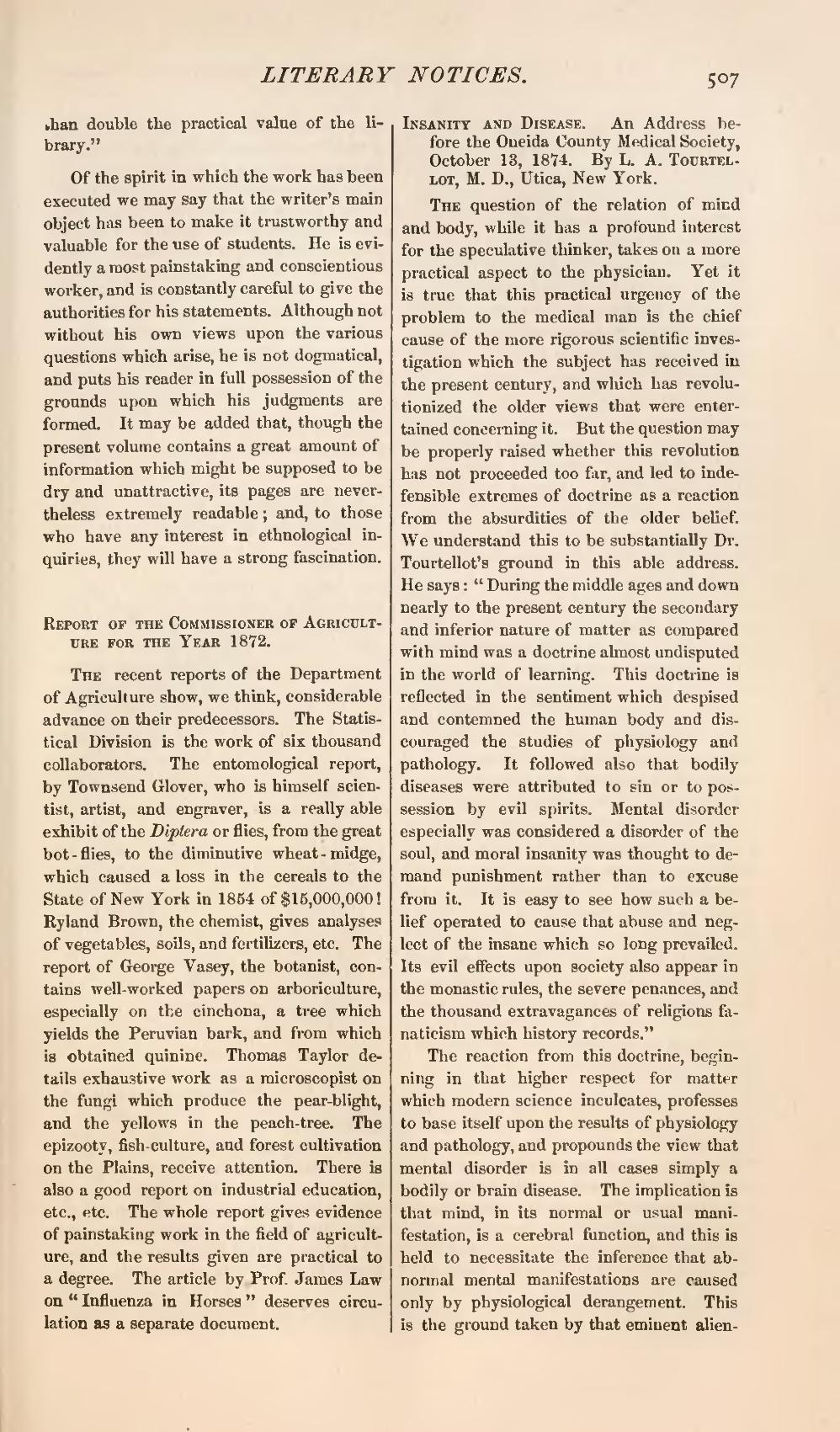than double the practical value of the library."
Of the spirit in which the work has been executed we may say that the writer's main object has been to make it trustworthy and valuable for the use of students. He is evidently a most painstaking and conscientious worker, and is constantly careful to give the authorities for his statements. Although not without his own views upon the various questions which arise, he is not dogmatical, and puts his reader in full possession of the grounds upon which his judgments are formed. It may be added that, though the present volume contains a great amount of information which might be supposed to be dry and unattractive, its pages are nevertheless extremely readable; and, to those who have any interest in ethnological inquiries, they will have a strong fascination.
Report of the Commissioner of Agriculture for the Year 1872.
The recent reports of the Department of Agriculture show, we think, considerable advance on their predecessors. The Statistical Division is the work of six thousand collaborators. The entomological report, by Townsend Glover, who is himself scientist, artist, and engraver, is a really able exhibit of the Diptera or flies, from the great bot-flies, to the diminutive wheat-midge, which caused a loss in the cereals to the State of New York in 1854 of $15,000,000! Ryland Brown, the chemist, gives analyses of vegetables, soils, and fertilizers, etc. The report of George Vasey, the botanist, contains well-worked papers on arboriculture, especially on the cinchona, a tree which yields the Peruvian bark, and from which is obtained quinine. Thomas Taylor details exhaustive work as a microscopist on the fungi which produce the pear-blight, and the yellows in the peach-tree. The epizooty, fish-culture, and forest cultivation on the Plains, receive attention. There is also a good report on industrial education, etc., etc. The whole report gives evidence of painstaking work in the field of agriculture, and the results given are practical to a degree. The article by Prof. James Law on "Influenza in Horses" deserves circulation as a separate document.
Insanity and Disease. An Address before the Oneida County Medical Society, October 13, 1874. By L. A. Tourtellot, M. D., Utica, New York.
The question of the relation of mind and body, while it has a profound interest for the speculative thinker, takes on a more practical aspect to the physician. Yet it is true that this practical urgency of the problem to the medical man is the chief cause of the more rigorous scientific investigation which the subject has received in the present century, and which has revolutionized the older views that were entertained concerning it. But the question may be properly raised whether this revolution has not proceeded too far, and led to indefensible extremes of doctrine as a reaction from the absurdities of the older belief. We understand this to be substantially Dr. Tourtellot's ground in this able address. He says: "During the middle ages and down nearly to the present century the secondary and inferior nature of matter as compared with mind was a doctrine almost undisputed in the world of learning. This doctrine is reflected in the sentiment which despised and contemned the human body and discouraged the studies of physiology and pathology. It followed also that bodily diseases were attributed to sin or to possession by evil spirits. Mental disorder especially was considered a disorder of the soul, and moral insanity was thought to demand punishment rather than to excuse from it. It is easy to see how such a belief operated to cause that abuse and neglect of the insane which so long prevailed. Its evil effects upon society also appear in the monastic rules, the severe penances, and the thousand extravagances of religious fanaticism which history records."
The reaction from this doctrine, beginning in that higher respect for matter which modern science inculcates, professes to base itself upon the results of physiology and pathology, and propounds the view that mental disorder is in all cases simply a bodily or brain disease. The implication is that mind, in its normal or usual manifestation, is a cerebral function, and this is held to necessitate the inference that abnormal mental manifestations are caused only by physiological derangement. This is the ground taken by that eminent alien-
